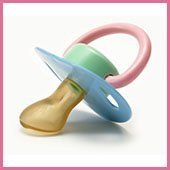Dummy guide: important tips & hints for baby´s dummy

Interesting information on the form, material & use of a dummy
For many parents a dummy is simply an items that is part of the healthy development of their babies. It is a fact that the sucking reflex is innate to us and essential for the initial food intake. But if the teat is used for too long it can result in problems ranging from language difficulties as well as learning to swallow. We from Schnullerkettenladen provide you with advice what you must consider in respect to dummies and when it is time to wean the child from the dummy. Beyond this we show you how to individually design and embellish the teat of your little treasure - for loving and healthy baby years.
Topics overview
Use of dummy
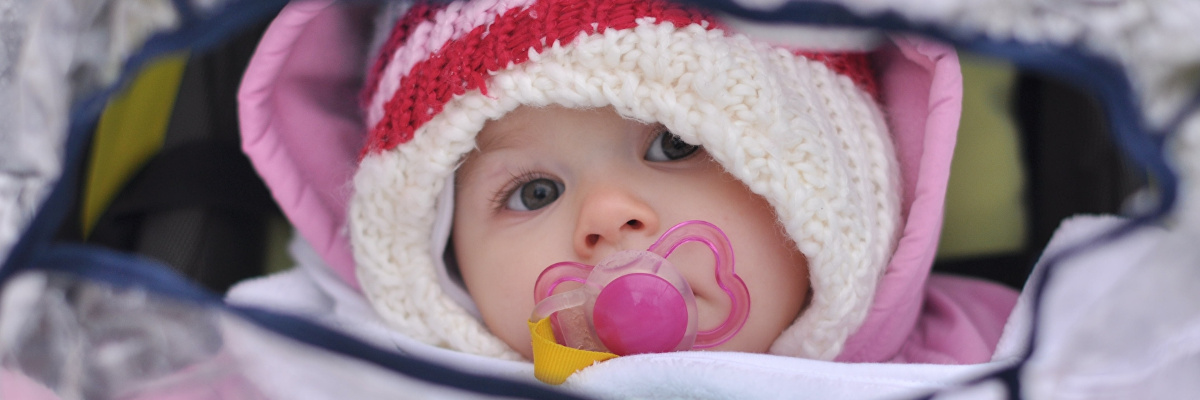
The use of a dummy is in many ways sensible. Particularly the teat has a soothing effect and helpful for the child's well-being. With the so-called suction reflex endorphins are produced that have a relaxing and calming effect as well as help digestion. The latter is particularly good for the little one as with the help of a teat the nutrition provided swifter with the bottle. Thanks to the calming affect a dummy is also the perfect item to help to get the baby to sleep and also acts as a soother for pain in the first years of life. A dummy should not be immediately gives to the child after birth as this may result in breastfeeding problems. Due to the gentle suction on the teat the baby will not develop enough strength when sucking the nipple which can impact on the baby turning faster to the bottle than originally intended.
Overall Effect & Use of a Dummy
- has a calming effect
- provides comfort
- helps get to sleep
- promotes indigestion
- particularly helpful after breastfeeding
Material, Size & Forms of Teat
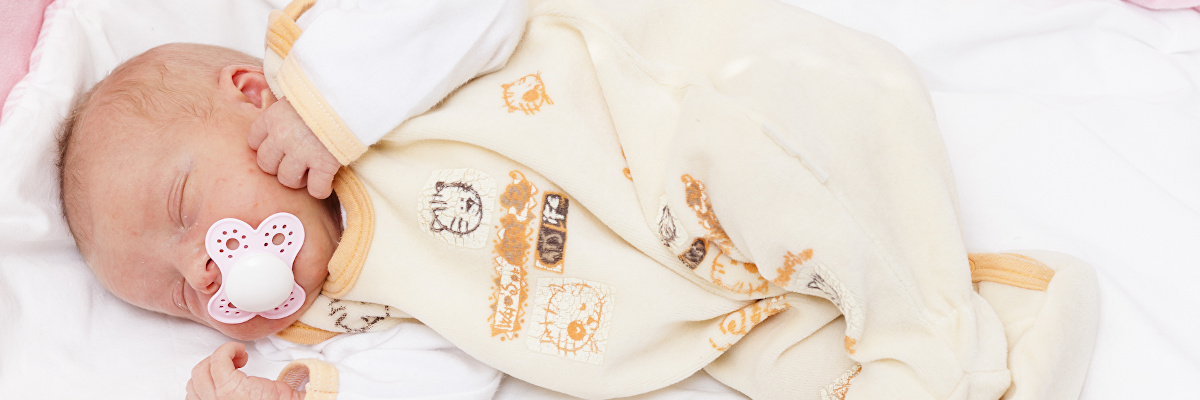
The material, size and form of the teat very much depend on the individual taste of your baby. Regarding the form, for example the flattened form, cherry form or drop form, it is important that your treasure feels comfortable with it.
Many parents however trust in the jaw-suitable form which is slightly flattened and fits perfectly into the palate of the baby's mouth. Also, in respect to materials one should give regard to what your angel prefers. The size however should be adapted to the development and age of your child. Else there is the chance of jaw damage or swallowing of the dummy.
Determine the right size of the dummy
The right dummy size is dependent of the child's age. For this reason it is important to change the dummy size after 6 and 18 months respectively. You can see a too big dummy as the soft suction piece won't fit properly into the mouth and the silicone or latex piece can still be seen. The change to a large dummy should be made during the day as you can keep an eye on the suction behaviour of your little treasure.
- Size 1: 0 - 6 months
- Size 2: 6 - 18 months
- Size 3: from 18 months
Latex dummy or silicone dummy?
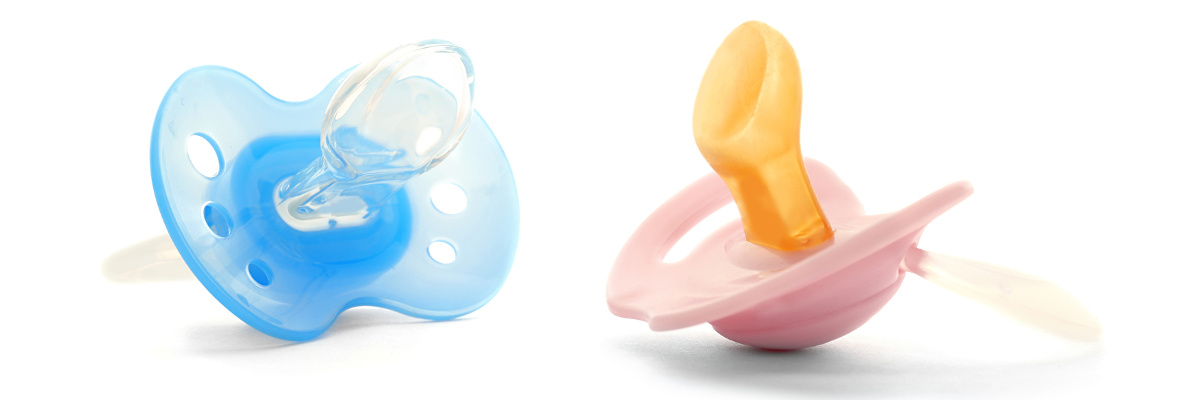
The question whether a latex or silicone dummy is better for your baby can only be answered after testing them. Nevertheless, we have compiled some characteristics that should help your choice.
Latex dummy - Characteristics
- comprises of natural material
- reacts to fats and sunlight
- age faster
- change after one to two months
- for neutralization boil with milk
Silicone dummy - Characteristics
- comprises of clear plastic
- temperature-resistant
- insensitive to fats and sunlight
- signs of biting at the start
- change after one to two months
Shelf life, care & hygiene of dummies
The regular care as well as cleaning of dummies is extremely important for the child's well-being. If this is neglected there is the chance of viruses, bacteria or toxic elements developing which potentially could harm your child. Generally you should boil the teat before using it for the first time. Afterwards sterilization has to be done as your baby hasn't got all antigens activated an subsequently is more susceptible to bacteria. Clean the dummy with boiling water or special sterilization agents. You should avoid putting it into the dishwasher.
Toxic elements in dummies?
Some dummies can contain toxic elements which pose a threat to your baby. For this reason it is important to always boil the dummy before using it the first time. We from Schnullerkettenladen know how vital the first years are for the future development of the child and we only manufacture non-toxic products which have no negative impact on the child's well-being and health.
Thumb sucking
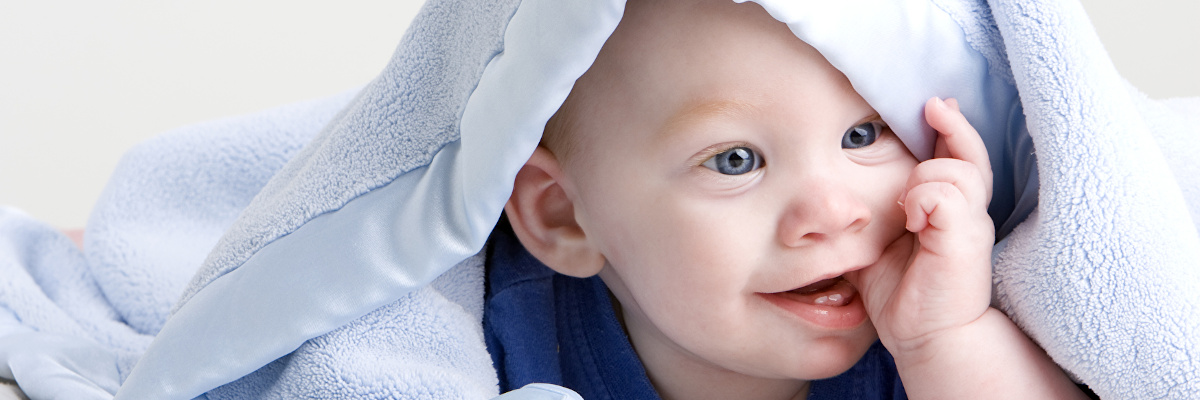
Shelf life, care & hygiene of dummies
The regular care as well as cleaning of dummies is extremely important for the child's well-being. If this is neglected there is the chance of viruses, bacteria or toxic elements developing which potentially could harm your child. Generally you should boil the teat before using it for the first time. Afterwards sterilization has to be done as your baby hasn't got all antigens activated an subsequently is more susceptible to bacteria. Clean the dummy with boiling water or special sterilization agents. You should avoid putting it into the dishwasher.
Toxic elements in dummies?
Some dummies can contain toxic elements which pose a threat to your baby. For this reason it is important to always boil the dummy before using it the first time. We from Schnullerkettenladen know how vital the first years are for the future development of the child and we only manufacture non-toxic products which have no negative impact on the child's well-being and health.
Thumb sucking is a popular alternative for babies as sucking option.The sucking of the thumb is something natural like we do in the womb of our mother from the fifth month of pregnancy.
There are many children that actually prefer to suck on their thumb than putting in an artificial dummy. At first it might be seen as a healthier and better option for a baby.
But is that really so? What is better? Dummy or thumb?
Dummy or thumb?
There are varied opinions on whether a dummy or thumb is the better option. Generally sucking the thumb is extremely practical for your child as it is always available, can't fall on the floor or needs to be attached to baby clothes. Beyond this your baby will not be subject to any artificial items or materials possibly containing toxic elements. On the other hand the constant sucking can result in jaw and teeth problems as it doesn't correspond with the natural form of the mouth. Experts for this reason recommend a dummy suitable for jaws.
Breaking the habit

After the age of two the habit of using a dummy should be broken to avoid your child having teeth or jaw problems.
However, approach the project slowly and not suddenly as your child is having to give up something that so far has helped when going to sleep or offered comfort.
It is recommended that when withdrawing the dummy to combine this with positive event. Alternative comforting items such as a cuddle blanket or cuddly toy are helpful. It is however important to approach it with caution and to initially take it away for a few hours.
The right age for breaking the dummy habit
There is no perfect time for dummy withdrawal. Generally parents are able see if the child is willing to give up its previous comfort. Experts do however advise to withdraw it by the age of three in order to prevent possible teeth and jaw problems.
In case of a relapse
Relapses with dummy withdrawal are completely normal and no reason to panic. Particularly in stressful moments it can happen that your little one wants the comforting teat back. In such a case keep calm and give way. Generally understanding, sensitivity and encouragement will help more than a ban.
Dummy accessories
Diverse dummy chains to make yourself
A dummy is something very personal and in the first months a permanent companion in your child's life. Make it unique with our dummy chains and discover the suitable accessories like dummy chain clips, small bells or textile stars for calming or increasing the well-being of your valuable treasure in our online shop.


